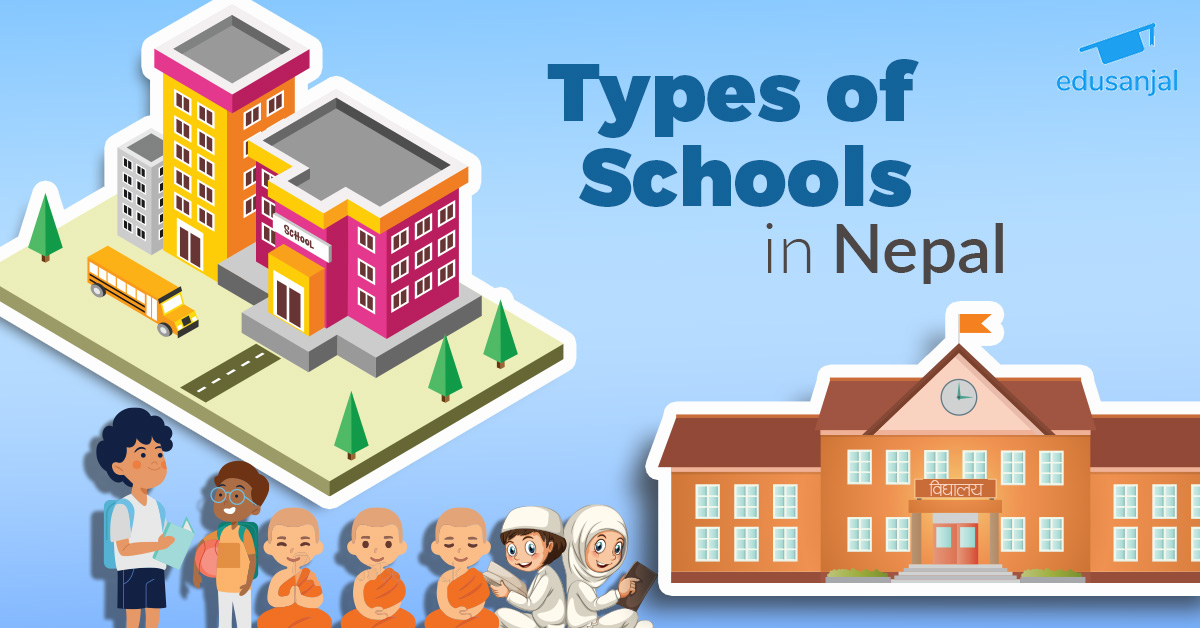
There are various types of schools based on certain kinds of characteristics and functioning of their operations. Generally, the schools in Nepal are broadly categorized into two major types: Community schools and Institutional schools.
1. Community Schools
Community schools are the type of schools that are supported by the government and are similar to that of public schools. After the establishment of the Constitution Act 2015 and the federal government structure, the local level government is responsible for the operation and management of basic and secondary education (Chikanbanjar, 2017). With this reform, there is the maximum probability that the operations and the management of the public schools can be improved which was neglected in the previous public education system of Nepal.
Furthermore, the community schools are divided into three subcategories which are as follows:
Types of Community Schools in Nepal
a. Community-Aided Schools
These are the type of community schools where the responsibility regarding paying the salary and other forms of expenses is in the hand of the government.
b. Community-Managed Schools
These are the types of community schools that are fully supported by the government for the teacher's salary and other funds but the community is responsible for the management of the schools.
c. Community-Unaided Schools
These are the type of community schools that might get partial support or may not get any support from the government for running their operations.
2. Institutional Schools
Institutional schools are the type of schools that are supported by the parents and the trustees and are similar to that of private schools.The government intervention does not take place in these type of schools regarding the structuring of the fees, etc as these schools are exclusively funded by parents and the trustees (Adhikari, 2019). For delivering equitable education based on social justice, the number of private schools in Nepal is increasing. As compared to community schools, the institutional schools are well facilitated in terms of infrastructures and resources ultimately leading to high tuition fees.
Besides, there are also some of the schools in Nepal that also run under the category of religious schools.
3. Religious Schools
These schools do receive the governmental support of Nepal if they abide by the formal school education system by getting registered with the DOE (Department of Education) as well as adhering to follow the education acts and regulations.
The Government of Nepal has been providing annual grants to religious schools at various school levels (Basic and Secondary level). The government is also involved in providing free textbooks and scholarships to encourage the students for continuing their education that helps them to grab opportunities and overcome the challenges (Government to regulate all religious schools, 2015).
Some of the sub-categories of religious schools that have been operating around the country in various parts are discussed below:
a) Madarasa
These are the type of religious schools that are operating for the people of the Muslim Community.
b) Ashram/Gurukul
These are the type of religious schools that are operating for the people of the Hindu Community.
c) Gumba/Vihar
These are the type of religious schools that are operating for the people of the Buddhist Community.
References
Adhikari, R. (2019, May 10). Private vs public schools. Retrieved from The Himalayan Times: https://thehimalayantimes.com/...
Chikanbanjar, R. (2017, November 19). Education ethos. Retrieved from The Himalayan Times: https://thehimalayantimes.com/...
Government to regulate all religious schools. (2015, September 29). (H. N. Service, Producer) Retrieved from The Himalayan Times: https://thehimalayantimes.com/...




